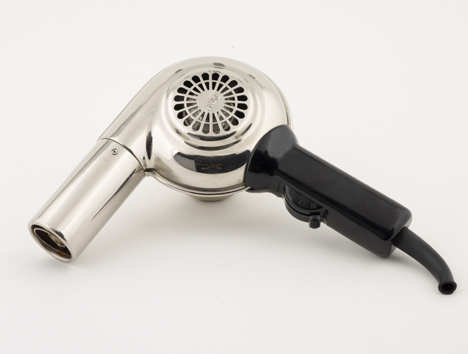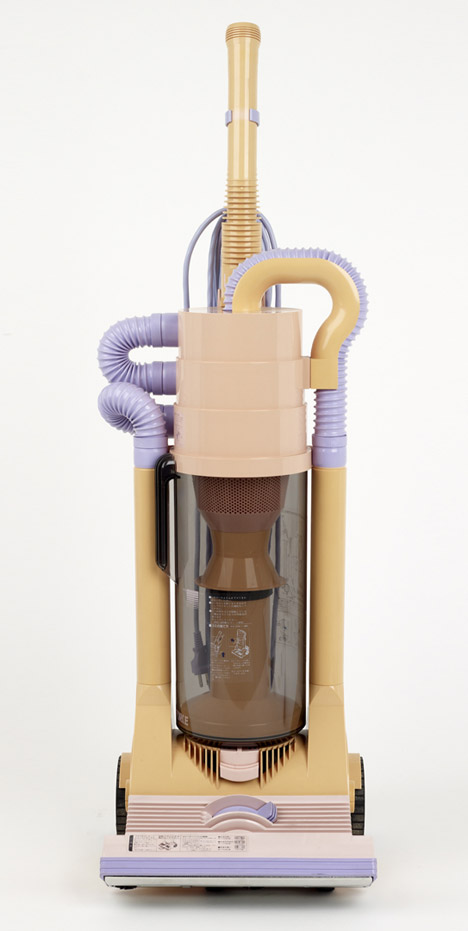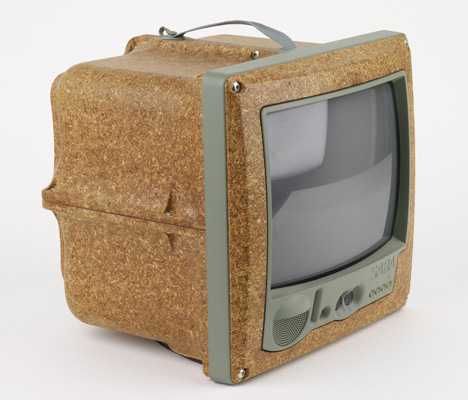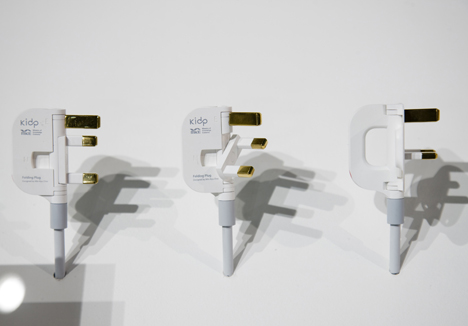Design Museum Collection App: electrical products
Design Museum director Deyan Sudjic was filmed by Dezeen for the Design Museum Collection App and in this compilation he talks about electronic products including the Jim Nature TV with a chipboard case by Philippe Starck. You can download the iPad app free from the app store here.
Sudjic also discusses how the AEG hairdryer and Dyson vacuum cleaner, which he reveals started off as a novelty item, and how a student from the Royal College of Art may be revolutionising the standard British plug design.
See all the movies filmed for the Design Museum Collection App »
Download the Design Museum Collection App »
Here are some excerpts from the app:

AEG Hairdryer (above)
Peter Behrens’ work for German electrical engineering company AEG redefined the role of the industrial designer in the twentieth century. Through his work for AEG, Behrens was the first person to create an unified and consistent corporate identity and his approach permeated the entire AEG corporate culture. He aimed to design household products in such a way so that they would not only work well, but also be both aesthetically pleasing and recognisable as an AEG product. In this hairdryer, designed around 1915, the ventilation holes in the chrome-plated metal casing not only have a technical function, but are also decorative and have an added benefit of drawing attention to the embossed logo.

Dyson DC02 (above)
Frustrated that his top-of-the-line Hoover was failing to live up to expectations, British-born inventor, and industrial designer, James Dyson resolved to invent
a vacuum cleaner that neither clogged nor relied on cleaner bags. After some 15 years of research, over 5000 prototypes and overcoming insurmountable odds – including near financial ruin and numerous patent lawsuits against companies trying to copy his technology – Dyson launched the DC01 in 1993. It was the first vacuum cleaner to work on the principle of cyclone technology without the need for vacuum bags and cleaners and set new standards in the industry.
The Dyson cyclone technology works by employing cyclonic separation, which spins air at high speed. Dirt and dust are thrown out of the airflow and collected in a bin, not on filters or in bags. With the launch of the DC02 in 1994, Dyson had improved the dexterity of his original iconic yellow and grey design through the canister form, allowing it to work on stairs and around corners and objects. A meeting of practicality, innovation and alluring design has kept Dyson’s products at the forefront of the market sector.

Jim Nature (above)
Having designed everything from yachts to toothpicks, Philippe Starck is regarded as one of the world’s most famous designers. While his output since the 1980s has been prolific, and the Starck brand is now a global empire, his real success has been in revolutionising the design market, forcing manufacturers to make household designs affordable and, as with the Jim Nature television, encouraging consumers to re-evaluate the products with which they choose to surround themselves. The four case sections of Philippe Starck’s Jim Nature portable television of 1994 are made from moulded resin-impregnated sawdust and wood powder, fixed together with simple screws. The design proves that a humble, even banal material, traditionally hidden under veneer, can have a potent, appealing aesthetic impact.

Mu (above)
Min-Kyu Choi’s folding plug called Mu revisits the design of the standard UK electrical plug, which has remained largely unchanged since its introduction in 1947. Infuriated by having to carry around bulky UK plugs thicker than his laptop, Choi developed a prototype system that folded down to a width of just 10 millimetres. After a period of product development, Mu launched in 2012. Choi has also expanded the concept to include a three appliance multi-plug and USB charger, allowing the use of multiple devices while still only taking up the space of a single traditional plug.